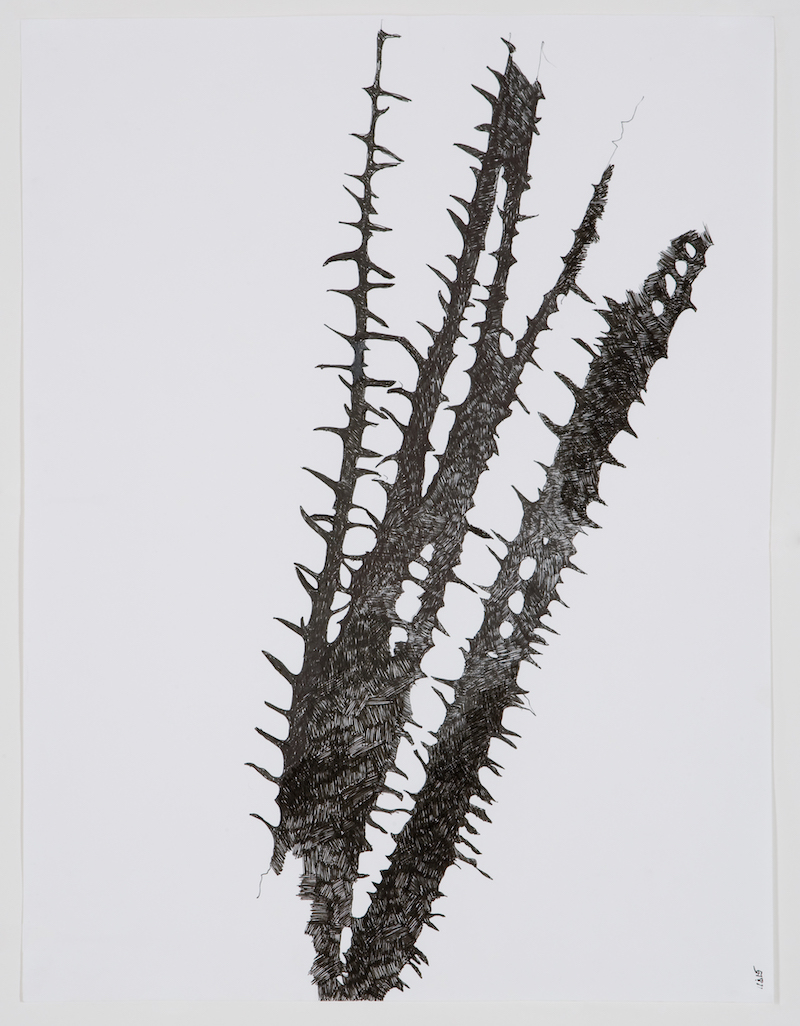25 September 2020
Drawn to Geoscience: Crowdsourced science at the intersection of art and science
Posted by Shane Hanlon
#DrawnToGeoscience is a series of posts by artists who draw about science and explain their process and inspiration while also showcasing their pieces. Learn more about contributing. This week, Lee Ann Woolery.

Ocotillo (Fouquieria splendens) shadow drawings for biodiversity inventory. The ‘Shadow Drawing’, an art-based research methodology I designed in the late 1990’s to study biodiversity is meant to work in concert with traditional Western science research methods such as a line transect. All artworks copyright © by Lee Ann Woolery.
Today, I am an interdisciplinary researcher, environmentalist, artist, and educator that employs art-based research methods in tandem with Western science methods to study environmental issues in the field. But life didn’t start out that way. I declared myself an artist at age 11, spending hours outside in the woods and along creekbanks where I grew up in the Midwest. I thought for sure I would become a scientist and study the natural world conducting field studies across the globe, working at the intersection of art and science. However, math did not come easily for me and my hopes for a science career were deflated when I flunked organic chemistry in high school. My talent was in the visual arts, so following an organic path of least resistance, I continued to excel in the arts until my mid-40’s. It was then that I said, wait a minute, what I really want to do – is to work at the intersection of art and science and employ art, creativity as a way to find creative solutions to our most pressing environmental issues. So I persevered and completed a doctorate in environmental studies and began developing Art-Based Research methods (ABR) as a means to know and understand ecological systems. I call my ABR methodology, Art-Based Perceptual Ecology. And for the past 20 years I have shared these methods with others that they might connect more deeply with the natural world. My outreach has involved teaching graduate students in the sciences, non-formal multigenerational educational programming, art/science workshops, conference presentations, public presentations, and mentoring young women with the desire to bring more women into the sciences.
My most current joy is Citizen Artist. This is a new crowdsourced science opportunity I have developed that employs art-based research methodologies and offers a mobile technology platform for sharing data. The goals of Citizen Artist are to empower citizens using the arts as a new way of seeing and as a catalyst for change; to reach populations who have been overlooked and who might not otherwise participate in crowdsourced science to get involved; to get citizens outside to experience the beauty and wonder of the natural world.

Woolery teaching a young student the shadow drawing method in the Sonoran Desert. In the Citizen Artist toolkit, there are numerous art-based research methods that bring the researcher to a tacit understanding of the subject being studied. The ‘Shadow Drawing’ is only one such method. Credit: Lee Ann Woolery
Art as a way of knowing the natural world can be explained like this – in the space of tacit knowing where words and numbers cannot define the phenomena experienced, the art becomes another language that codifies and communicates the researcher’s understanding. Interaction between the two modes of knowing – tacit and explicit is vital for the creation of new knowledge.
My practical advice for others. The advancement of science to the exclusion of alternative perspectives may leave out an entire population of co-creative collaborators. An inclusive action would be opening science to new research paradigms such as Art-Based Research. This approach would bring together current researchers with new collaborators with the potential of achieving new innovative solutions to our most pressing environmental issues.
For more information on Citizen Artist and Art-Based Perceptual Ecology, please go to my website: http://www.ecoartexpeditions.com
-Dr. Lee Ann Woolery is Research Director and CEO for EcoArt Expeditions and Citizen Artist. Find her work on her website and Researchgate.


 The Plainspoken Scientist is the science communication blog of AGU’s Sharing Science program. With this blog, we wish to showcase creative and effective science communication via multiple mediums and modes.
The Plainspoken Scientist is the science communication blog of AGU’s Sharing Science program. With this blog, we wish to showcase creative and effective science communication via multiple mediums and modes.